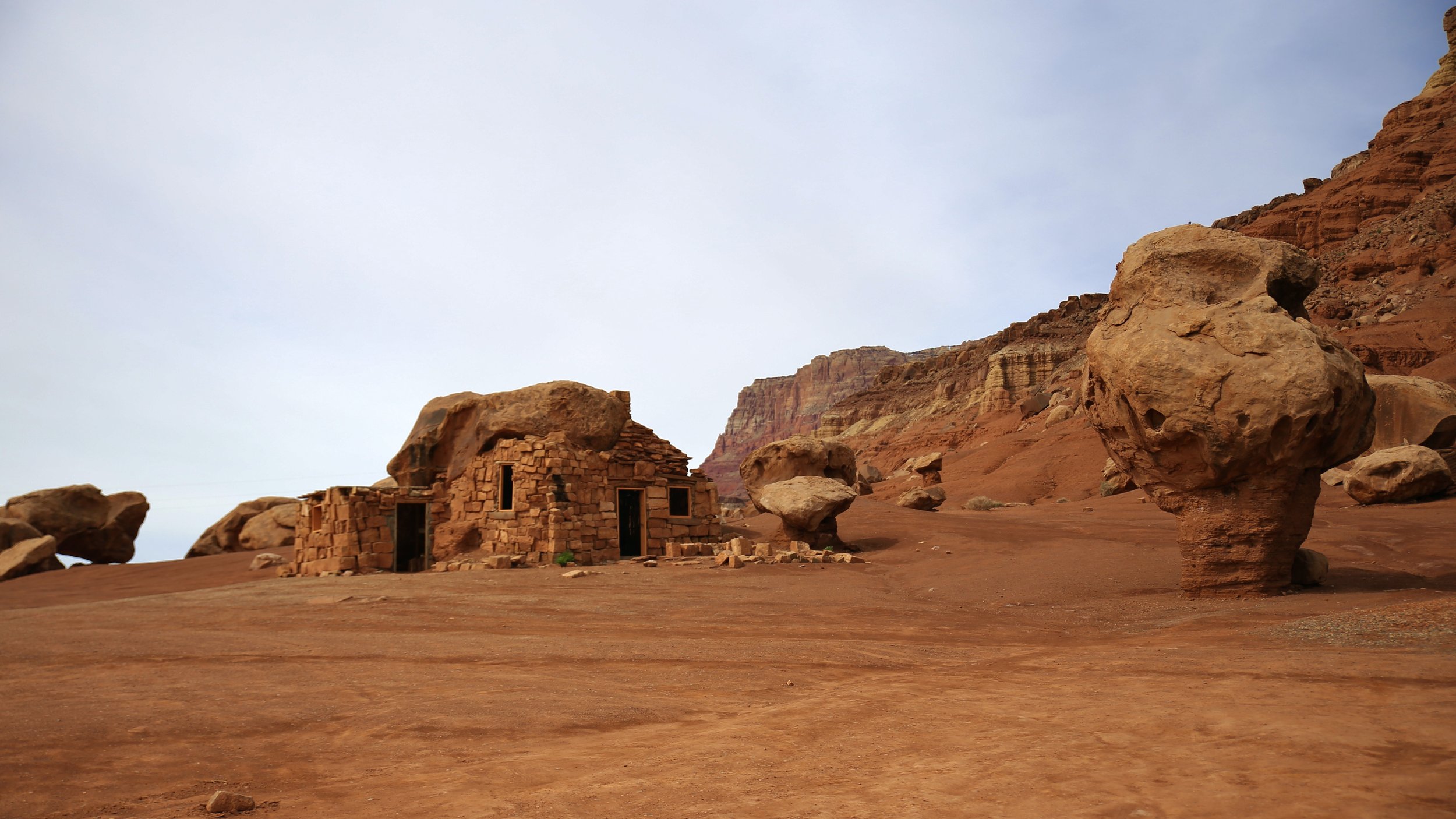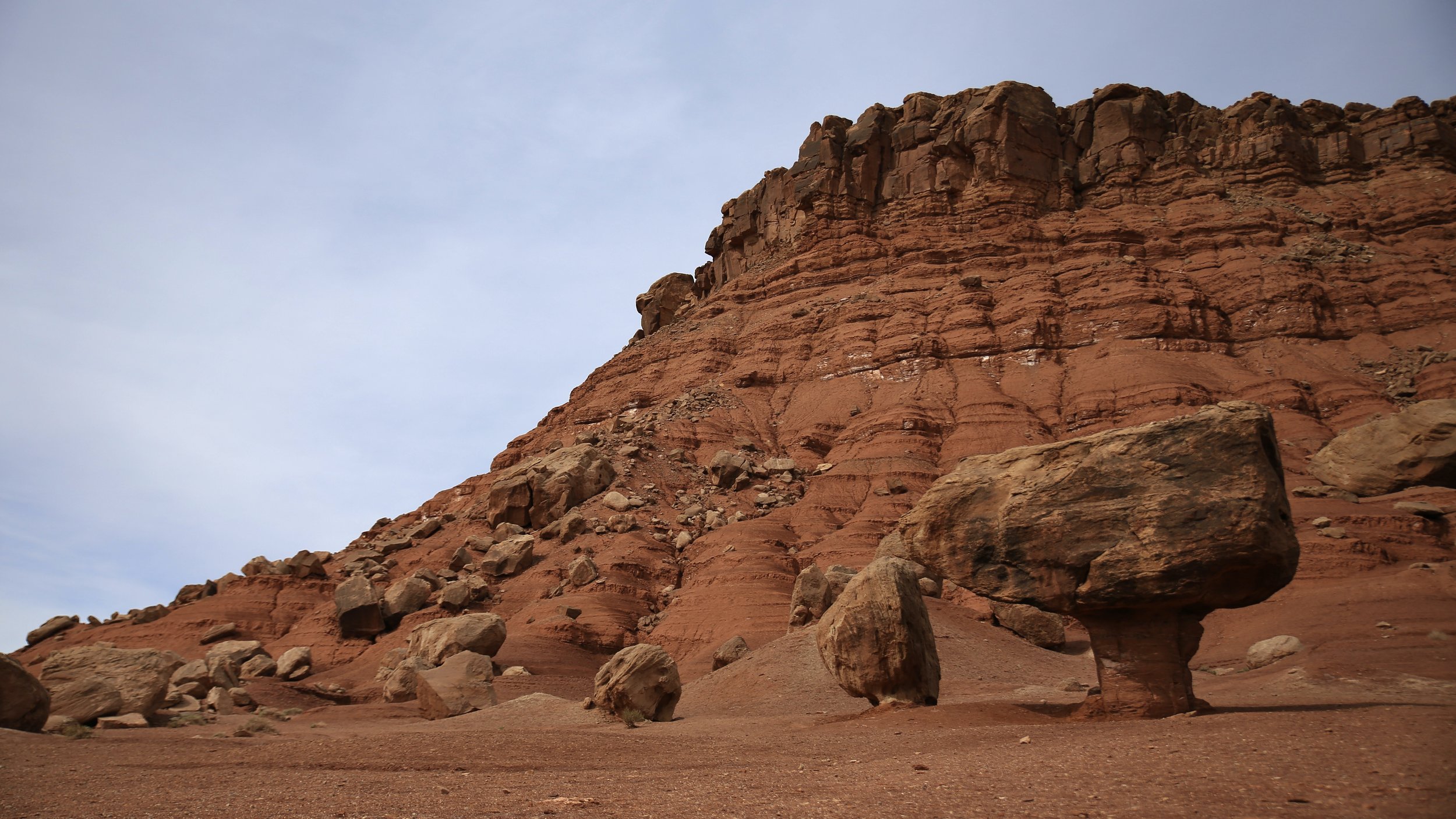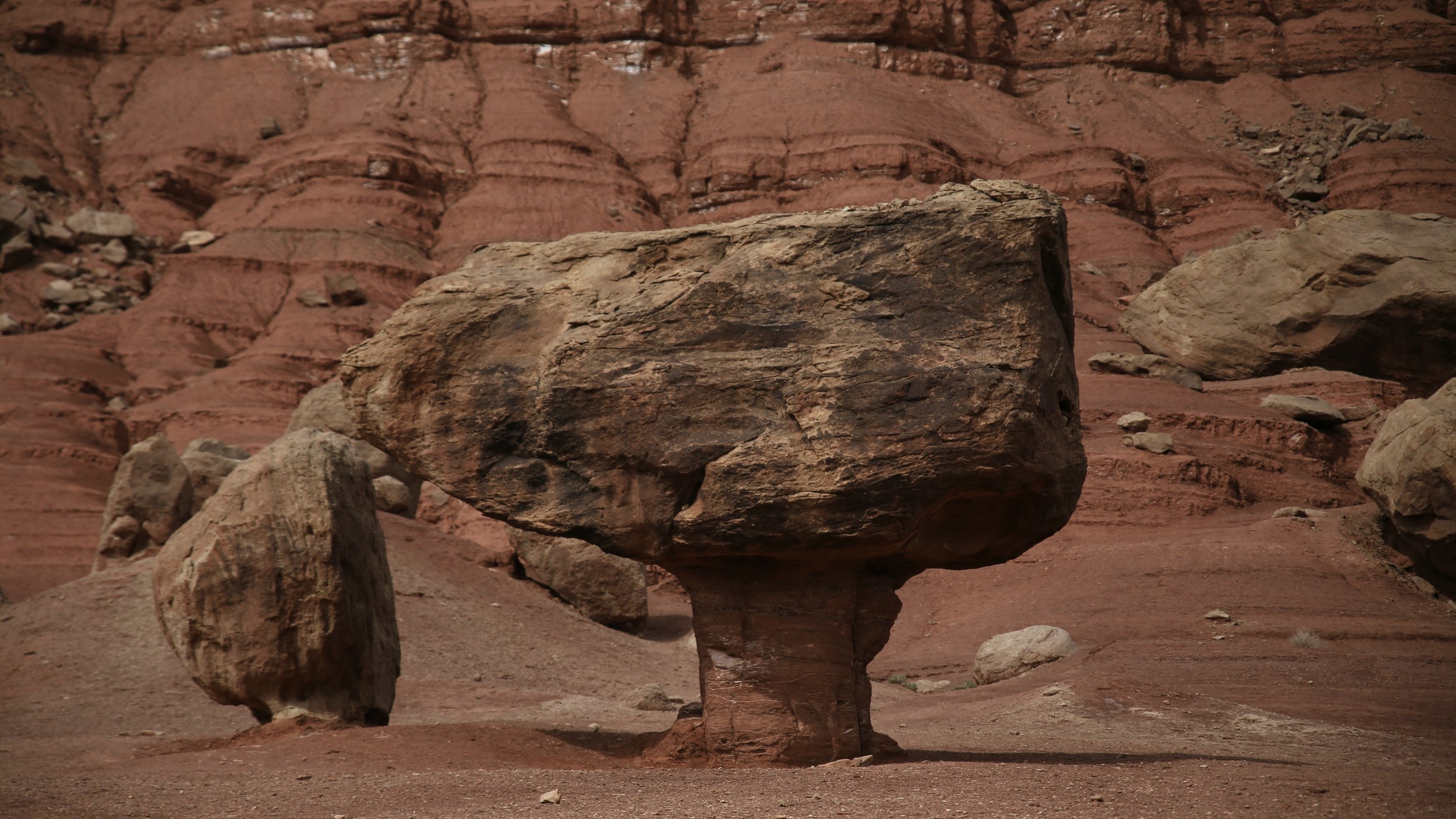
Lees Ferry
Lees Ferry is part of the Glen Canyon, Vermillion Cliffs, Echo Cliffs, Marble Canyon area of natural beauty that encapsulates this picturesque Colorado River scene. It’s a beautiful spot where you can drive right up to the river for some fishing, hiking, to put in or take out your boat, kayak, or raft, or just have a picnic. There is a campground and five primitive sites along the river and all are first come first serve campsites. There are also historical buildings and the sunken steamboat to visit.
There are 4 trails at Lee’s Ferry ranging from easy to very difficult. One of them, the Spencer Trail, is only 4.4 miles roundtrip but it sports a steep 1,700 foot elevation gain. Although at the top, the views of the River and of the city of Page are apparently breathtaking. Another hike, the Cathedral Wash hike (3 miles roundtrip) takes you through its namesake down to the river. Along the way you can see fossils and cool geological formations. My wife and I did the easy and scenic River Trail (3 miles roundtrip) on the day we visited for a relaxing and quiet riverside jaunt.






Lees Ferry is also where the Paria River has its confluence with the big silty behemoth of the Colorado. Just before that confluence sits the sunken steamboat. Its story is further down the page. Also check out the two ruins built by Charles H Spencer, the same man who hauled in the steamboat, during his attempts to collect gold.






The beautiful Vermillion Cliffs line the sights to the west while the Echo Cliffs dominate the east.








Up the river is the famous Horseshoe Bend.

As you approach the little Monument, be sure to spy the Balanced Rocks and the old Moqui looking buildings on 89A.






Also on 89A is the beautiful and impressive Navajo Bridge, which ultimately made Lees Ferry obsolete for crossing.

At this location on the river, the Dominguez & Escalante Expedition of 1776 attempted and failed to ford. At that point the water had been 100 yards across; as big as a football field. They’d end up crossing up the river at a spot that is now underwater.
It’s name comes from a very interesting story though.
In 1870, John D Lee first came to the site so he could help Mormons who wanted to cross from Utah into Arizona.
John D Lee was a member of the Church of Jesus Christ of Latter Day Saints himself and had been essentially since the beginning of the religion. He’d been friends with Joseph Smith and he had been adopted by Brigham Young, the second prophet and leader of the church after Joseph Smith’s martyrdom in prison. Although, John D Lee’s last words would be spent denouncing Brigham young.
Back in Missouri though, in the 1830s, John D Lee had been a part of something called the Danites during the Mormon War of 1838; the first of three Mormon wars in that area. In this secret vigilante fraternal order, which was condemned by church leaders, one was expected to defend the members of the church by whatever means; Including violence and murder. At the time there was a lot of tar and feathering and murdering and raping of Mormons by non-Mormons. Most of these secret combination members would be excommunicated during their lives. Although, almost all were brought back into the faith after death.
So John D Lee was a secret vigilante militia member who eventually ended up in Utah with the rest of the church where he would later dress up as a Paiute Indian and attack an Arkansas party of far west California bound settlers known as the Baker-Francher Party who were camped at Mountain Meadows. Yes, John D Lee took part in the Mountain Meadows Massacre. At the time the US Army was sent to invade the territory of Utah and overthrow the Theodemocracy known as Deseret.
Because of the fears of annihilation (and also because of the fact that some Arkansaians had killed a Mormon Apostle a couple years before) things got out of hand and the Mountain Meadows Massacre resulted in 120 dead and 17 children taken by the church.
John D Lee, for his part in the massacre would eventually be killed by a firing squad in 1877 at the site of the 1857 massacre. He’d be the only one found guilty of the massacre. Afterwards, one of Lee’s 19 wives took over the ferry before the Church eventually bought it. Gold was found later in the area and by the 1920s a giant steamboat had been brought into Marble canyon at Lees Ferry. Once there, it promptly sank and you can still visit it today. It is apparently the largest vessel to have ever floated the Colorado River north of the Grand Canyon.
On the day my wife and I visited Lees Ferry in March of 2023, there were tons of swallows diving, fisherman trying to catch a meal, and a few boats rowed or floated by with excited & tired sun kissed passengers. It was a beautiful spot with the sheer red and orange cliff walls that tower over the river. On the other bank, across from the parking lot where we had a picnic in the truck bed were some wild looking Navajo horses grazing below Lees Backbone.
